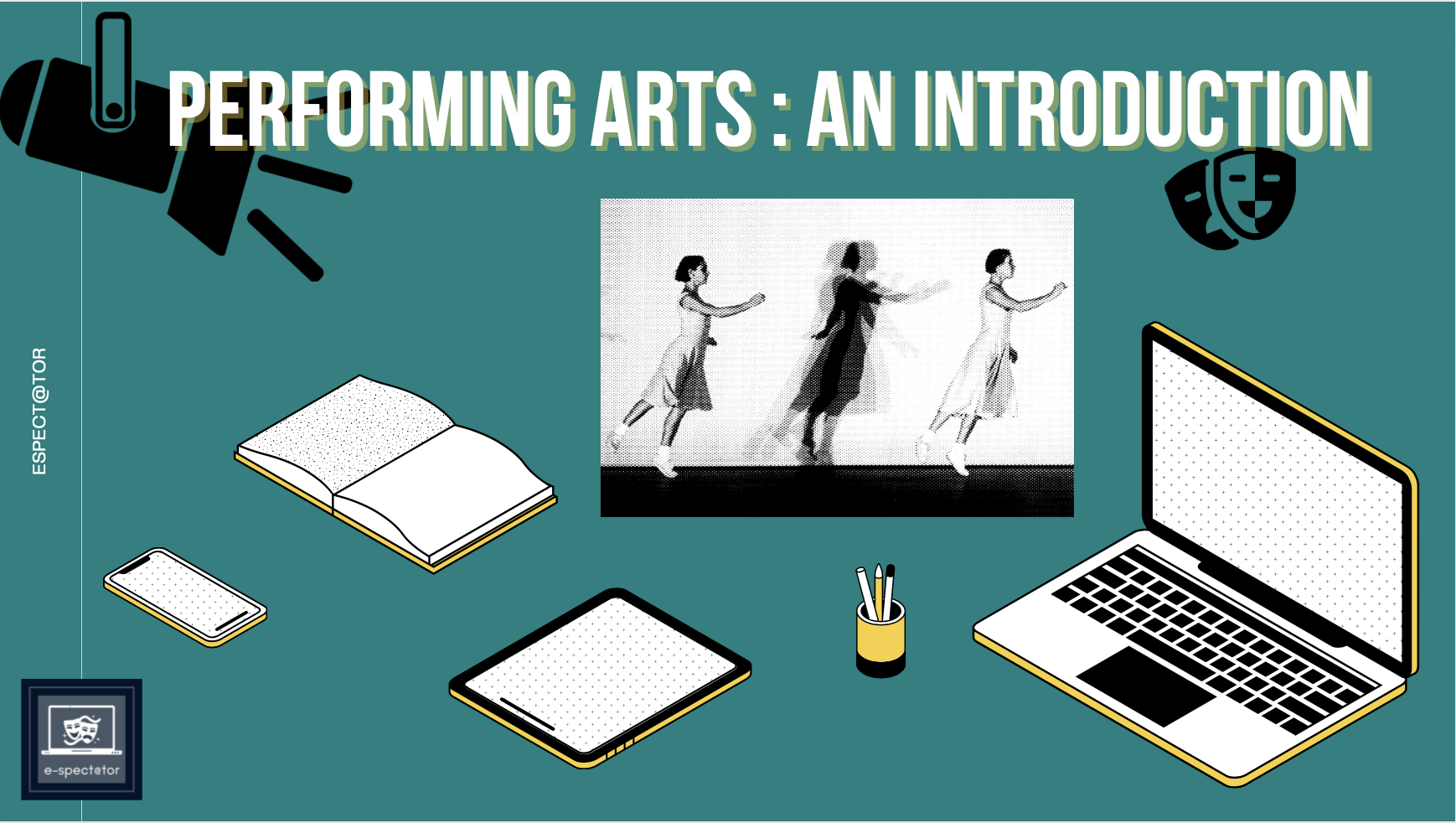1.1 General overview
1.1.1 Performing Arts: a definition

Performing Arts are artistic disciplines such as dance, music or theatre that involve the realisation of a "performance": that is, they compose an event whose action and temporal unfolding create the artistic work. It is, therefore, an artistic practice that is expressed and appreciated in its realisation, not in its result.
Performance of the play Orfeo by Carlos Denis Molina in 1952 by the Catalan director Margarita Xirgu in an unconventional location (pine forest in Punta del Este, Uruguay)
In this sense, the Performing Arts are opposed to the so-called "Arts of mimetic representation", such as painting, cinema or literature, which, for their part, mime and represent a world but do not reproduce it as an event. In her book Lire le théâtre II, L'école du Spectateur, Anne Ubersfeld indicates that the mimetic Arts are :
Arts of representation, of absence: the painting or the film are also present, beings that are there, but that figure a fiction, an absence" [Ubersfeld, 1981: 37].
On the other hand, the Performing Arts create, embedded in the so-called real world, a world composed of its own space and time:
It is therefore a "chronotope" that is inserted into the space-time of the spectators and that cohabits, exists and "lives" within it. So "they are Arts of time, of living presence. They are what they are" [Ubersfeld, 1981: 37].
References :
- Ubersfeld, A. (1996c). Lire le théâtre II : L’école du spectateur. Belin.

